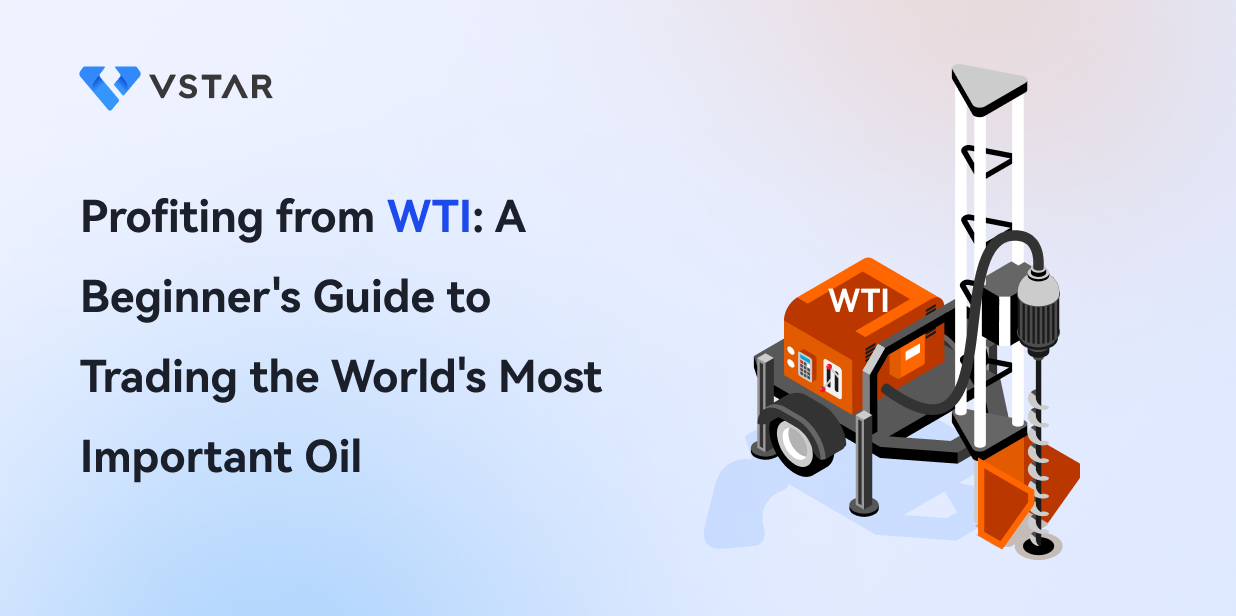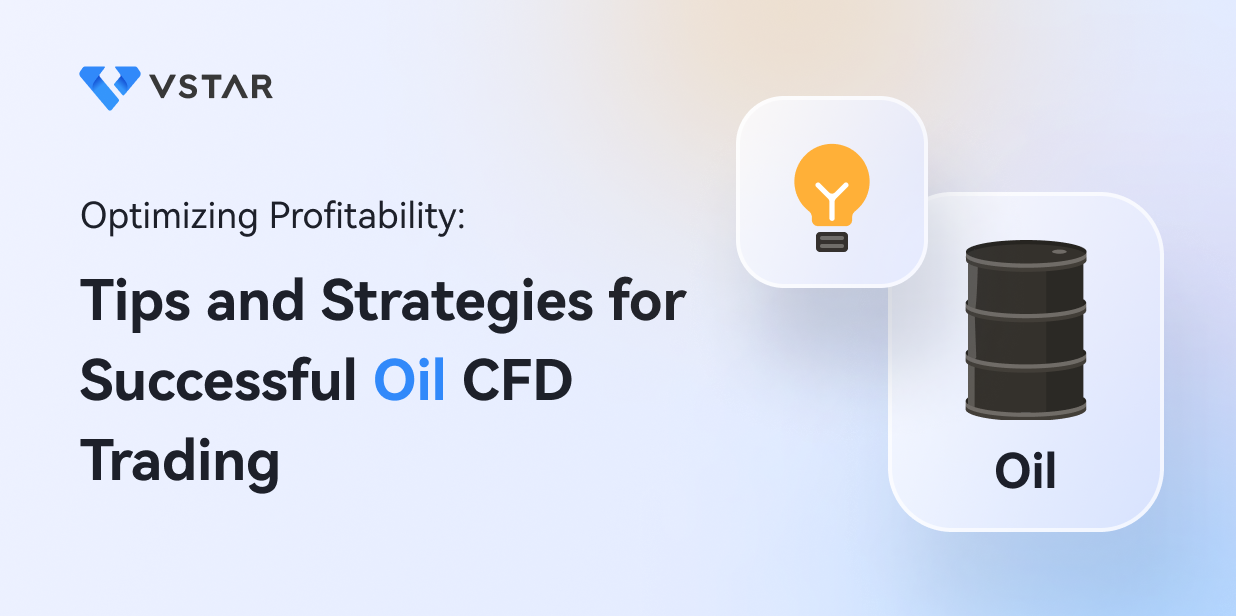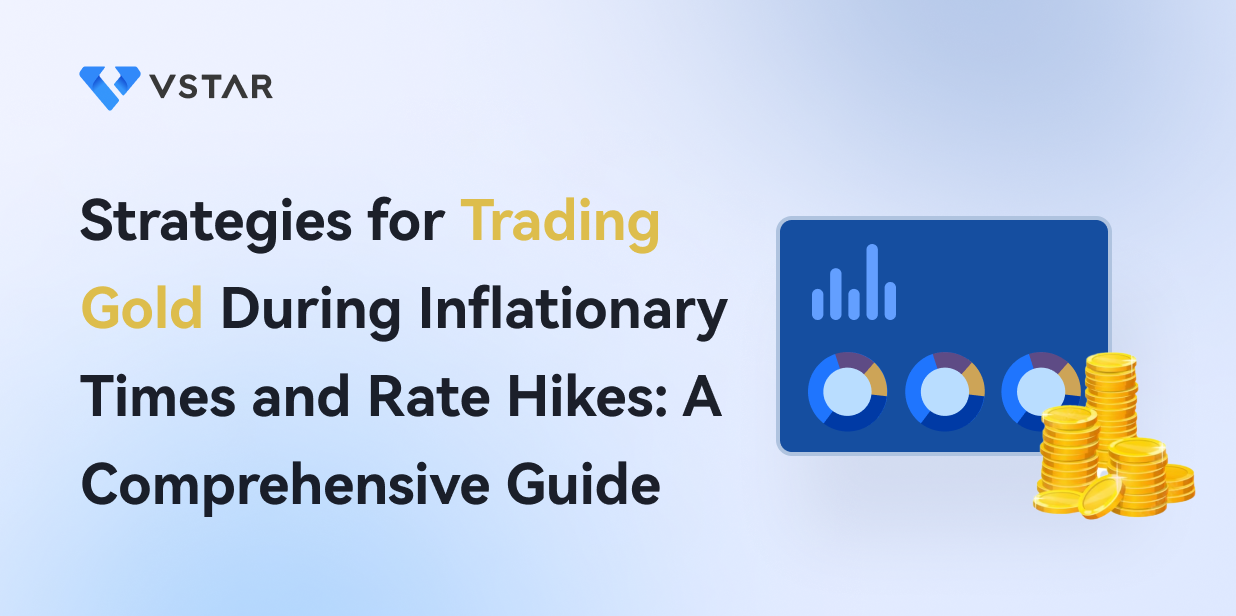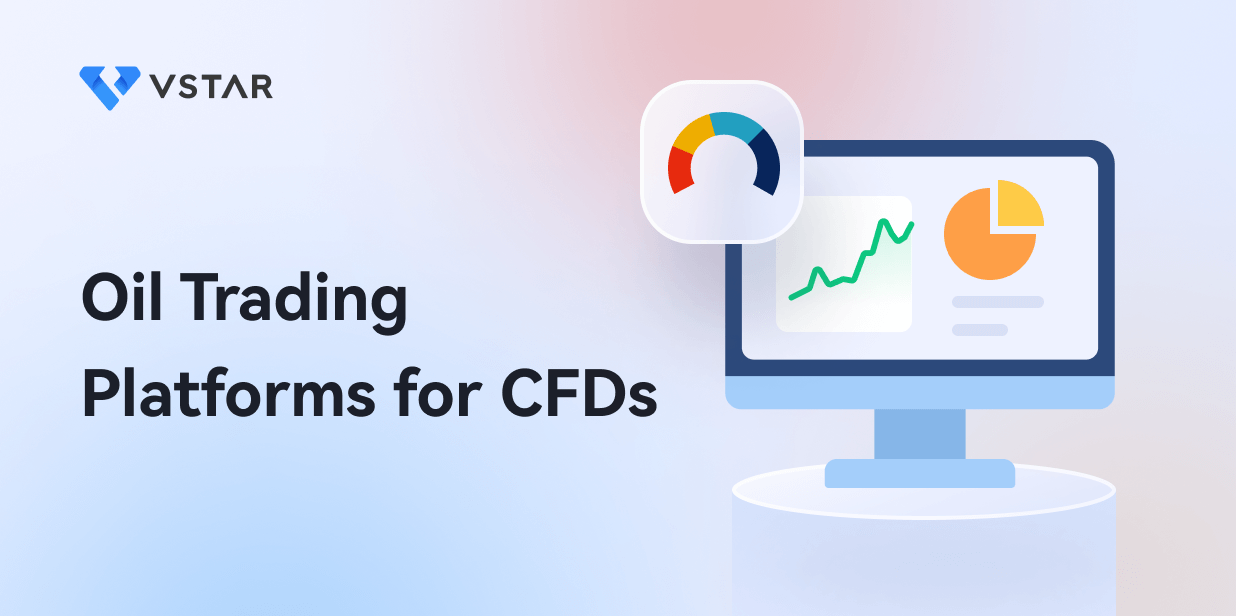Introduction
If you're looking to enter the exciting world of oil trading, understanding the dynamics of West Texas Intermediate (WTI) is crucial. As one of the most important benchmarks for oil prices, WTI holds immense significance in the global oil market. This beginner's guide will provide you with valuable insights on profiting from WTI in 2023.
WTI is a type of crude oil that serves as a key reference point for oil pricing worldwide. Its high quality and low sulfur content make it sought after by refineries, making WTI prices influential in determining global oil prices.
To start trading WTI, familiarizing yourself with the market's fundamentals is important. Stay updated on the latest news, geopolitical events, and supply and demand factors that impact WTI prices. Understanding technical analysis and chart patterns can also help you identify favorable trading opportunities.
So, let's delve into the world of WTI trading and discover the steps you can take to make informed decisions and potentially maximize your profits.
Understanding WTI

Image Source: Unsplash
In order to effectively trade West Texas Intermediate (WTI), it's crucial to have a solid understanding of the production, physical characteristics, pricing, and benchmarking of WTI. It will help you to acquire a solid foundation for trading this important commodity.
Here's what you need to know to navigate the world of WTI trading:
A. Production and sources of WTI
WTI is primarily produced in the United States, specifically in the Permian Basin located in Texas and New Mexico. It is extracted from shale formations using advanced drilling techniques like hydraulic fracturing (fracking). The significant growth in shale oil production has propelled the United States to become a leading producer of WTI, contributing to its global importance.
B. Physical characteristics and quality of WTI

Image Source: Unsplash
WTI is known for its exceptional quality, characterized by its low sulfur content and high API gravity. These physical attributes make it desirable for refining into gasoline and other high-value products. The quality and consistency of WTI make it a preferred choice for futures contracts and serve as a reliable benchmark for global oil pricing.
C. How is WTI priced and benchmarked
WTI is priced and benchmarked through various mechanisms. The New York Mercantile Exchange (NYMEX) serves as the primary platform for WTI futures contracts. These contracts allow traders to speculate on the future price of WTI and manage their exposure to price volatility. The settlement price of WTI futures contracts on NYMEX is widely used to determine the daily price of WTI.

Image Source: Unsplash
Furthermore, the price of WTI is influenced by factors such as supply and demand dynamics, geopolitical events, OPEC decisions, and macroeconomic indicators. Monitoring these factors and staying abreast of market news and trends can help you make informed trading decisions.
In the next section, we will explore the steps you can take as a beginner to profit from trading WTI, providing you with a roadmap to help you navigate this exciting market and potentially profit from your trades.
Fundamentals of trading WTI

Image Source: Unsplash
To embark on your journey of trading WTI and potentially profit from its volatility, it's essential to understand the fundamentals of the trading process. The following steps will guide you in setting up and managing your trading activities effectively and setting yourself up for success in the dynamic world of WTI trading.
A. Choosing a broker
The first step is to select a reputable broker that offers WTI trading services. Look for a broker that is regulated, offers competitive spreads, provides reliable trade execution, and has user-friendly trading platforms. Research different brokers, compare their offerings, and choose one that aligns with your trading goals and preferences.
B. Setting up a trading account
Once you've chosen a broker, you'll need to open a trading account. This typically involves providing your personal information, verifying your identity, and agreeing to the broker's terms and conditions. Follow the registration process provided by the broker, ensuring that you provide accurate and up-to-date information.
C. Funding a trading account
To start trading WTI, you need to deposit funds into your trading account. Most brokers offer various funding options, including bank transfers, credit/debit cards, and electronic payment systems.
Choose a convenient method, ensuring that you deposit an amount that aligns with your risk tolerance and trading strategy.
D. Choosing the right trading platform

A reliable and user-friendly trading platform is essential for executing your WTI trades efficiently. Look for platforms that offer real-time price charts, order management tools, technical indicators, charting tools, risk management features, and other customizable features. Test out different platforms provided by your broker and choose the one that suits your trading style and preferences enabling you to make informed trading decisions.
Speaking of choosing the right trading platform for WTI trading to ensure a seamless and profitable experience, VSTAR comes as one in a row. When evaluating platforms, consider VSTAR, an exceptional choice offering a range of benefits. With VSTAR, you gain access to a robust and user-friendly interface that simplifies the trading process. Its advanced tools and features provide real-time market data, enabling you to make informed decisions. The platform's intuitive design allows for quick navigation, making it easy to execute trades swiftly. VSTARs commitment to security ensures the safety of your funds and personal information. Trading WTI on VSTAR will allow you to enjoy a fast, reliable, and profitable trading experience.
E. Understanding trading tools and indicators
To enhance your trading skills, it's important to familiarize yourself with various trading tools and indicators. These tools help you analyze market trends, identify potential entry and exit points, and manage risk. Some commonly used tools include moving averages, oscillators, and candlestick patterns.
Learn how to interpret these tools and incorporate them into your trading strategy in making profitable trading decisions.
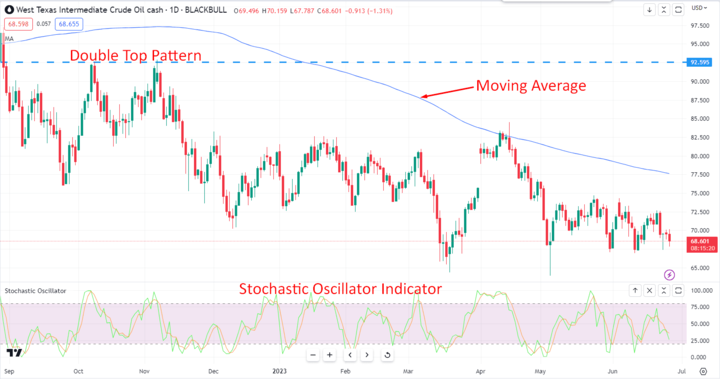
Image Source: Tradingview
By following these fundamental steps and acquiring knowledge of trading tools and indicators, you'll be better equipped to trade WTI successfully. Remember to continuously stay updated on market news, economic indicators, and geopolitical events that can impact WTI prices.
Continuously educate yourself, refine your trading strategy, and practice risk management to increase your chances of profiting from WTI, as it requires discipline, patience, and a willingness to learn from both successes and failures.
The next section will delve into specific trading strategies and techniques that can help you navigate the WTI market effectively and potentially maximize your trading profits. Get ready to dive deeper into the exciting world of WTI trading and unlock the potential for financial gains.
Trading strategies for WTI
To maximize your chances of profiting from WTI trading in 2023, it's crucial to employ effective trading strategies. Understanding technical and fundamental analysis and implementing proper risk management techniques can significantly enhance your trading outcomes.
A. Technical analysis
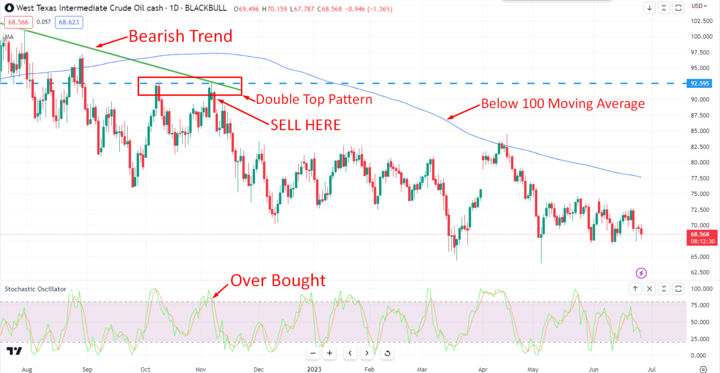
Image Source: Tradingview
Technical analysis in WTI trading involves studying price patterns, trends, and indicators to make trading decisions. Traders analyze charts, moving averages, support and resistance levels, and oscillators to identify potential entry and exit points. It helps assess market sentiment, volatility, and historical price behavior to predict future price movements and manage risk effectively.
1. Candlestick patterns and chart analysis
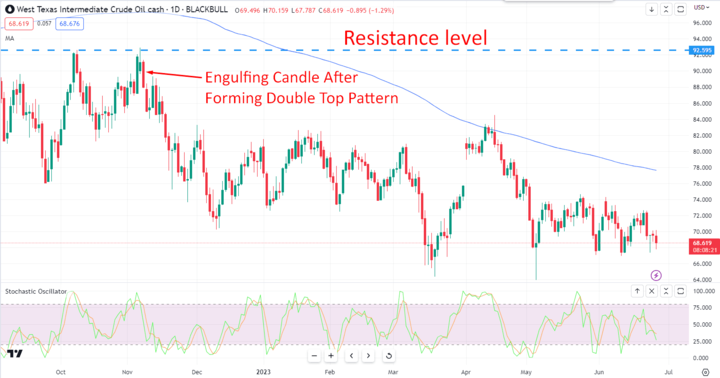
Image Source: Tradingview
Candlestick patterns provide valuable insights into market sentiment and potential price reversals. Learn to identify patterns like doji, hammer, and engulfing candles, which can indicate upcoming bullish or bearish trends.
Combine this analysis with chart patterns like support and resistance levels, trendlines, and chart formations to strengthen your trading decisions.
2. Trend lines and moving averages
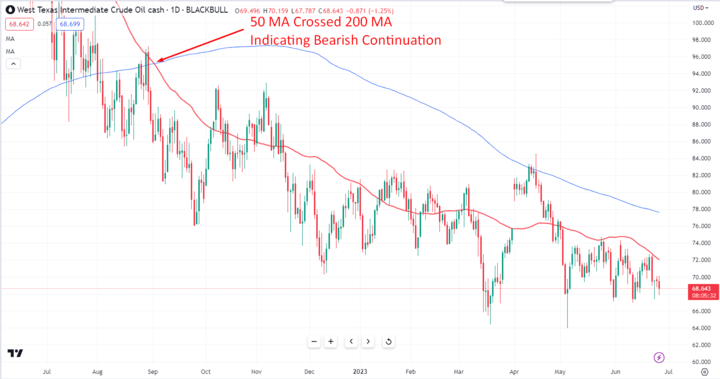
Image Source: Tradingview
Trend lines help identify the direction of WTI's price movement, enabling you to enter trades aligned with the prevailing trend. Moving averages, such as the 50-day and 200-day moving averages, smooth out price fluctuations and provide signals for potential entry or exit points. Utilize these tools to confirm trend direction and make informed trading choices.
3. Oscillators and indicators
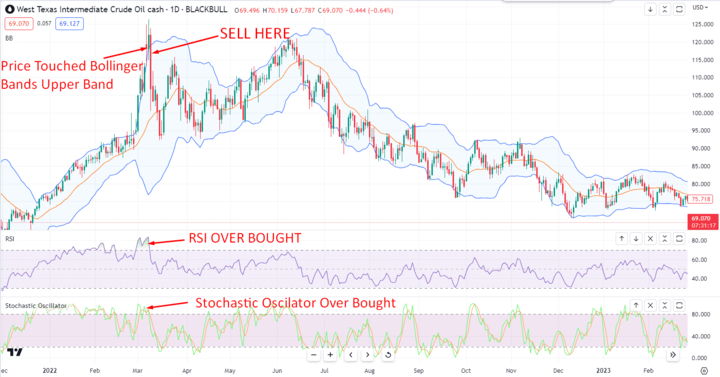
Image Source: Tradingview
Oscillators, like the Relative Strength Index (RSI) and Stochastic Oscillator, help identify overbought or oversold conditions, signaling potential price reversals. Technical indicators such as Bollinger Bands can provide additional insights into market volatility and potential trading opportunities. Combine these tools with other technical analysis methods to enhance your trading choices.
B. Fundamental analysis
Fundamental analysis in WTI trading focuses on evaluating the underlying factors that influence oil prices. Traders analyze supply and demand dynamics, geopolitical events, economic indicators, and production levels to assess the intrinsic value of WTI.
It helps identify long-term trends, market sentiment, and potential price catalysts, aiding in informed trading decisions.
1. Market news and events
Stay updated on market news and events that can impact WTI prices. This includes announcements from oil-producing countries, supply and demand dynamics changes, and geopolitical tensions updates. Economic data releases, such as inventory reports and GDP figures, can also influence WTI prices. Stay informed to anticipate market reactions and adjust your trading strategy accordingly.
2. Economic factors and policies
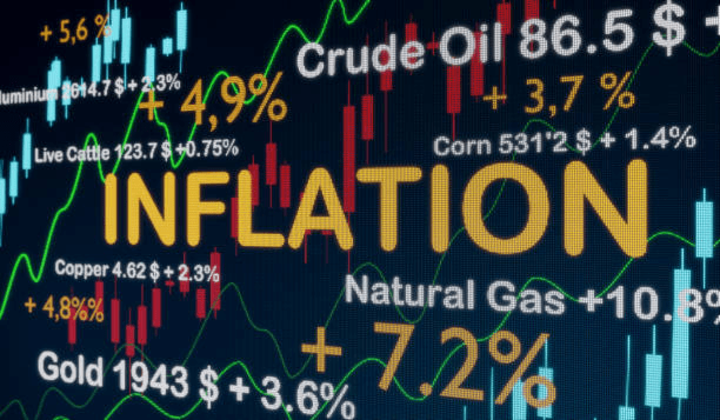
Image Source: Unsplash
Understand the influence of economic factors, such as interest rates, inflation, and currency fluctuations, on WTI prices. Changes in monetary policies by central banks, especially those affecting major oil-consuming countries, can significantly impact oil prices.
Analyze economic indicators and policies to gain insights into potential price movements.
3. Geopolitical events and regulations
Geopolitical events, such as conflicts in oil-producing regions or trade disputes between major economies, can disrupt oil supplies and impact prices. Additionally, keep track of regulatory changes and environmental policies that may affect the oil industry. Consider these factors in your fundamental analysis to anticipate market shifts.
C. Understanding risk management
Understanding risk management in WTI trading is crucial for preserving capital and minimizing losses. Traders employ strategies such as setting stop-loss orders, diversifying portfolios, using position sizing techniques, and implementing risk-reward ratios. It involves assessing potential risks, managing leverage, and staying disciplined to protect against market volatility and unexpected price movements.
1. Setting stop-loss orders
Implementing stop-loss orders helps protect your capital by automatically closing a trade if it reaches a predetermined price level. This risk management tool helps limit potential losses and preserves your trading capital.
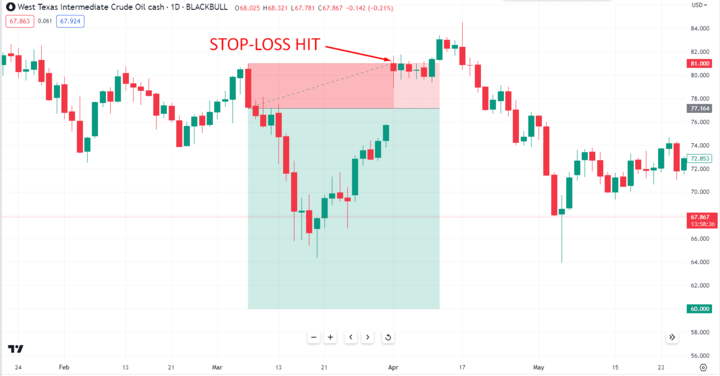
Image Source: Tradingview
For example, In WTI trading, a trader sets a stop-loss order on their WTI position at the 81.00 price level. If the price rises to or above the 81.00 price level, the position is automatically closed, limiting potential losses and protecting against further upside in the WTI.
2. Managing leverage and margin requirements
Be cautious when using leverage, as it amplifies both profits and losses. Understand the margin requirements set by your broker and ensure you have sufficient funds to cover potential losses. Use leverage responsibly, considering your risk tolerance and trading strategy.
For example, using a 1:10 leverage, a trader with $1,000 can control a $10,000 position. If the asset's price rises 5%, the trader's potential profit would be $500 instead of $50 without leverage. However, losses are also amplified, so caution and risk management are crucial.
3. Diversifying portfolios
Spread your risk by diversifying your trading portfolio. Consider including other commodities, currencies, or assets to offset potential losses in WTI trading. Diversification can help mitigate risk and improve overall trading performance.
Combining technical and fundamental analysis techniques and implementing effective risk management strategies can increase your chances of profiting from WTI trading. Always ensure you adapt to the changing market conditions, and refine your trading approach.
The next section will discuss additional tips and considerations to enhance your WTI trading journey. Get ready to take your trading skills to the next level and seize opportunities in the dynamic world of WTI trading.
Tips for successful trading of WTI


Remember that trading requires discipline, continuous learning, and the ability to adapt to changing market conditions. Develop a systematic approach, manage your risks effectively, and stay focused on your long-term trading goals. To achieve success in trading WTI, it's essential to follow these valuable tips:
A. Staying up-to-date with market trends
Keep yourself informed about the latest market trends and developments related to WTI. Stay updated on price movements, supply and demand dynamics, and significant news that can impact oil prices.
Utilize reputable financial news sources and market analysis platforms to gain valuable insights and make informed trading decisions.
B. Monitoring economic and geopolitical events

Image Source: Unsplash
Pay close attention to economic indicators, such as GDP growth, inflation rates, and employment data, as they can influence WTI prices. Additionally, keep an eye on geopolitical events, such as conflicts, trade disputes, and regulatory changes, as they can have a significant impact on the oil market. Being aware of these events allows you to adapt your trading strategy accordingly.
C. Disciplined trading and avoiding emotional decisions
Maintain discipline in your trading approach and avoid making impulsive decisions driven by emotions. Develop a well-defined trading plan that includes entry and exit strategies based on your analysis and risk tolerance. Stick to your plan and avoid chasing short-term price fluctuations or succumbing to fear and greed. Emotions can cloud judgment, so it's crucial to trade with a calm and rational mindset.
D. Continuous learning and improvement
Never stop learning and improving your trading skills. Stay curious and explore various trading strategies, technical indicators, and fundamental analysis techniques. Attend webinars, read educational resources, and engage with experienced traders to expand your knowledge. Analyze your past trades, identify areas for improvement, and adapt your approach based on market conditions and your personal experiences.
Conclusion
Trading WTI oil can be a profitable endeavor for beginners who take the time to understand the market's fundamentals. By grasping the production, pricing, and benchmarking of WTI, you gain valuable insights into its dynamics. Learning about trading strategies, risk management, and staying up-to-date with market trends is crucial for success.
It's essential to approach WTI trading with discipline, avoid emotional decisions, and continuously improve your skills. Remember that trading is a learning journey, and staying informed is key. Following these guidelines and embracing the trading process can increase your chances of profiting from WTI.







